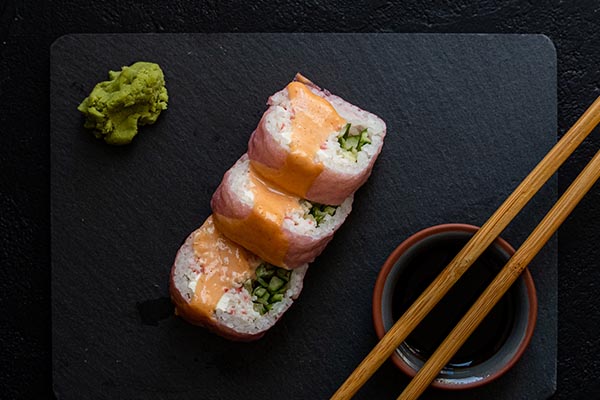Il Giappone, così differente per cultura (anche gastronomica) e costumi, ha sempre esercitato un certo fascino in noi occidentali. Solo recentemente, però, anche in Italia ha iniziato a prendere piede ed essere apprezzato il sushi: pietanza tipica, a base di riso, abbinata ad altri ingredienti come alghe, pesce e vegetali.
In pochi anni, la passione verso questo piatto si è sparsa a macchia d’olio e sempre più persone hanno deciso non solo di assaporare queste prelibatezze al ristorante ma anche di cimentarsi nella preparazione, scoprendo che assemblare i pochi (ma fondamentali) ingredienti che compongono il sushi, nasconde parecchie insidie. Quali sono questi errori? E come evitarli?
1) Il riso
Iniziamo dall’errore più comune che generalmente si commette: non tutte le tipologie di riso sono adatte per preparare il sushi.
Per ottenere le “polpettine” di riso è necessario che quest’ultimo sia colloso ed è possibile ottenerlo solo nel caso in cui, durante la cottura, venga rilasciato molto amido. Vanno evitati quindi il superfino, il fino ed il semifino. Allora quale rimane? Sorprendentemente, il riso migliore è quello comune, con i chicchi piccoli e tondeggianti, per esempio la varietà Originario.
2) Il riso non è stato lavato
Il secondo errore rimane legato alla preparazione del riso: a differenza dei risotti, a noi tanto cari e conosciuti, il riso non va versato direttamente in pentola ma ha bisogno di un passaggio preliminare.
Deve essere lavato in una ciotola con dell’acqua fredda, fino a quando quest’ultima non avrà più una colorazione bianca. In seguito andrà scolato, asciugato e messo a riposo per circa mezz’ora.
3) Aceto di riso e non di vino
Nella preparazione del sushi, nel riso, dovrà essere incorporata un’emulsione di sale, zucchero e aceto. Così come non tutte le tipologie di riso sono indicate, anche la scelta dell’aceto non fa eccezione.
Ogni aceto ha, infatti, una gradazione di acidità differente: in particolare quello di riso ha un gusto più delicato e meno coprente rispetto a quello di vino, a meno che non si utilizzi l’aceto di mele che ha una acidità ottimale!
4) Alga nori
I lati dei fogli delle alghe nori, a prima vista, possono sembrare simili ed è facile cadere nell’errore di stendere il riso sulla parte sbagliata. Prestando un po’ più di attenzione, noterai che un lato è ruvido e l’altro liscio ed è proprio quest’ultimo a dover essere appoggiato sulla stuoia per avvolgere il sushi. La parte ruvida aiuta, invece, a far attecchire meglio il riso.
5) Scelta del pesce
A differenza dei precedenti, in cui se commessi al massimo si ottiene una pietanza dal cattivo sapore, questo errore può portare a conseguenze pericolose per la salute. Nel sushi viene impiegato il pesce crudo, che non significa pescato, sfilettato, porzionato e mangiato, ma pescato sfilettato, porzionato e sottoposto alla procedura di abbattimento a -24° C per almeno 24 ore, così da scongiurare l’eventuale presenza del parassita Anisakis Simplex. Per legge, tutti i negozianti e produttori sono tenuti a rispettare queste precise indicazioni.
Ecco svelati i 5 errori da non commettere nella preparazione del sushi fatto in casa; se hai già provato ottenendo un risultato al di sotto delle aspettative, seguendo questi accorgimenti vedrai che il tuo prossimo sushi sarà degno di un ristorante!


